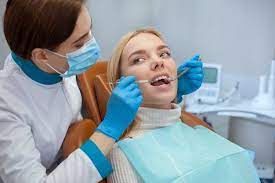Introduction:
Emergencies can strike at any moment, and when it comes to dental issues, the need for prompt attention is crucial. Dental emergencies, ranging from severe toothaches to unexpected injuries, require immediate care to alleviate pain, prevent further damage, and preserve oral health. In such situations, the role of emergency dentists becomes paramount, providing a lifeline for individuals grappling with urgent dental concerns.
Understanding Dental Emergencies:
Dental emergencies encompass a wide range of situations, each requiring specific attention from a qualified professional. Common emergencies include Severe Toothaches: Sudden, intense tooth pain may be indicative of underlying issues such as infections or dental abscesse Traumatic Injuries: Accidents resulting in chipped, cracked, or knocked-out teeth demand immediate intervention to prevent irreversible damage.
Lost or Loose Fillings/Crowns: A compromised restoration can expose sensitive dental tissue, leading to discomfort and potential complications Bleeding Gums: Persistent bleeding from the gums may indicate gum disease or other oral health issues requiring immediate attention Infections and Abscesses: Swelling, pus, and intense pain can signal an infection, necessitating urgent dental care to prevent the spread of the infection.
The Role of Emergency Dentists:
Emergency dentists are specially trained professionals equipped to handle urgent oral health issues. Their role extends beyond regular dental care to provide immediate relief and address acute problems. Key aspects of their role include:
Prompt Assessment: Emergency dentists quickly assess the severity of the situation, identifying the root cause of the problem to determine the most effective course of action.
Pain Management: Alleviating pain is a top priority for emergency dentists. They employ various techniques, including local anesthetics and pain relievers, to ensure patients are comfortable during the treatment process.
Stabilization of Injuries: In cases of trauma resulting in broken or dislodged teeth, emergency dentists work to stabilize the affected area, preventing further damage and increasing the chances of successful restoration.
Infection Control: Addressing infections promptly is crucial to prevent the spread of bacteria and mitigate potential complications. Emergency dentists prescribe antibiotics when necessary and perform procedures to drain abscesses.
Restorative Procedures: Emergency dentists are skilled in providing temporary and permanent restorative solutions, such as fillings, crowns, or bridges, depending on the nature of the dental emergency.
Accessibility and Availability:
One of the defining features of emergency dentistry is its accessibility and availability. Emergency dental services understand the unpredictable nature of dental crises and often provide extended hours, including evenings, weekends, and holidays. Some dental practices even have dedicated emergency lines to guide patients through the immediate steps they can take before arriving for treatment.
Educating the Public on Dental First Aid:
Emergency dentists play a crucial role in educating the public on basic dental first aid. This knowledge empowers individuals to take immediate action in case of a dental emergency, potentially minimizing the impact and facilitating smoother professional intervention. Common dental first aid practices include:
Tooth Preservation: Knowing how to handle a knocked-out tooth can significantly impact the chances of successful re-implantation. Storing the tooth properly and seeking immediate dental attention is crucial.
Pain Management Techniques: Understanding how to manage pain, such as using over-the-counter pain relievers or applying cold compresses, can provide temporary relief until professional care is available.
Managing Broken Restorations: In case of a lost or loose filling or crown, individuals can learn how to temporarily manage the situation to protect the exposed tooth until they can see an emergency dentist.
The Intersection of Emergency Dentistry and Technology:
Advancements in dental technology have significantly enhanced the capabilities of emergency dentists. From digital imaging for quick and accurate assessments to the use of laser technology for precise and minimally invasive procedures, technology plays a vital role in ensuring efficient and effective emergency dental care.
Collaborative Approach with Other Healthcare Providers:
Dental emergencies are sometimes interconnected with broader health issues. Emergency dentists collaborate with other healthcare professionals, such as physicians and surgeons, to provide comprehensive care when needed. This collaborative approach ensures that patients receive holistic treatment, addressing both oral and systemic health concerns.
Preventive Measures and Follow-Up Care:
Emergency dentists also play a crucial role in educating patients on preventive measures to avoid future emergencies. This includes emphasizing the importance of regular dental check-ups, practicing good oral hygiene, and addressing potential risk factors such as teeth grinding or sports-related injuries.
Additionally, emergency dentists provide guidance on follow-up care after emergency interventions. Follow-up appointments allow dentists to monitor the healing process, make any necessary adjustments, and ensure the long-term success of the treatment.
Conclusion:
Emergency dentists serve as frontline responders to oral health crises, offering immediate relief and comprehensive care when it matters most. Their specialized training, accessibility, and collaborative approach with other healthcare providers make them indispensable in preserving and restoring oral health during emergencies. As individuals become more informed about dental first aid and the availability of emergency dental services, the collective effort towards better oral health in the community can be significantly enhanced.


No comments yet